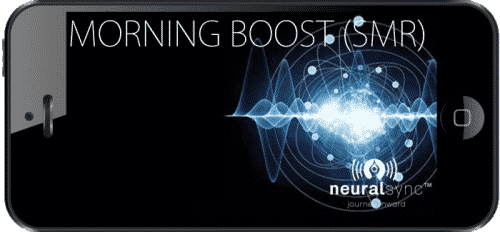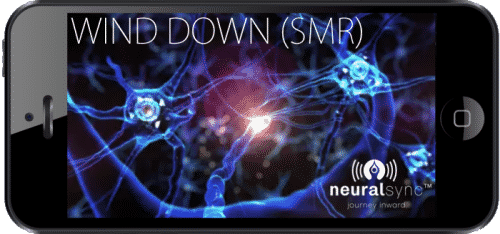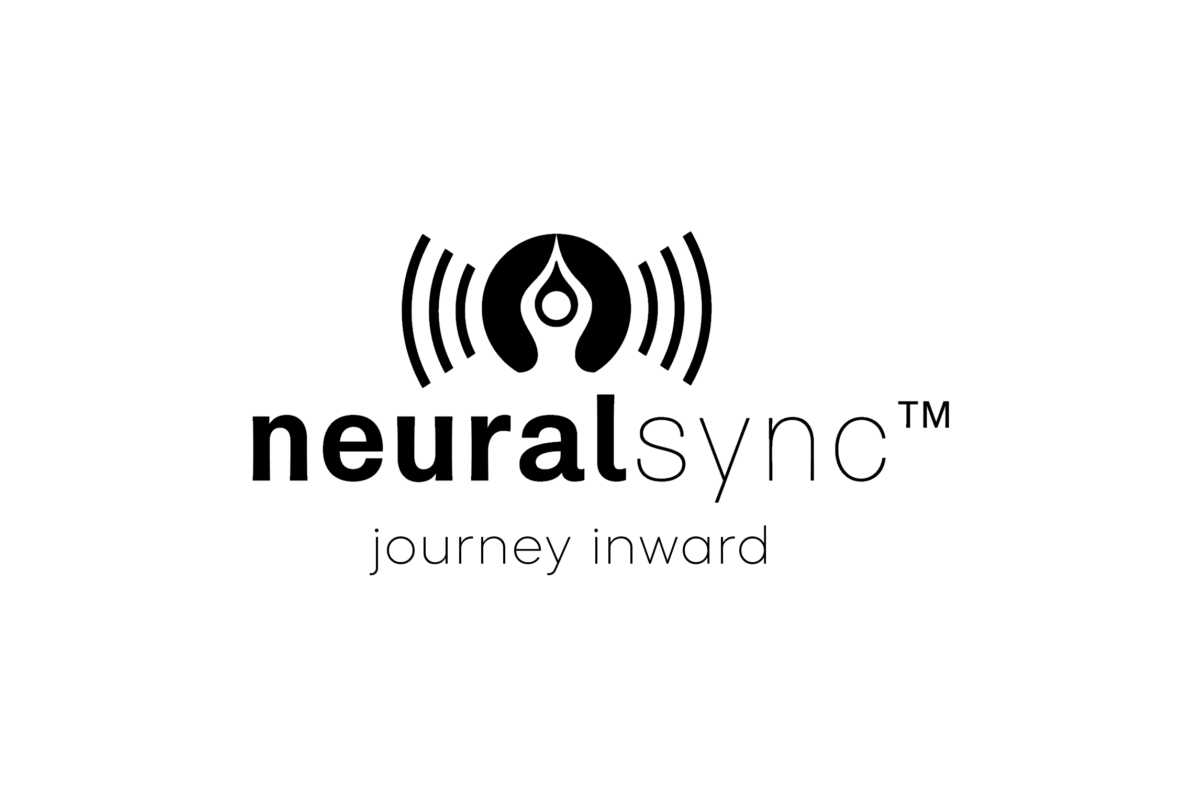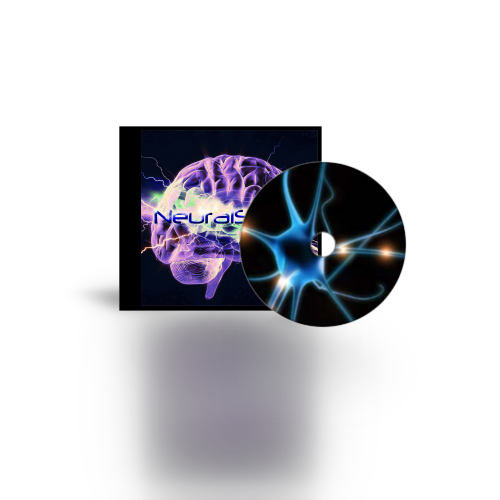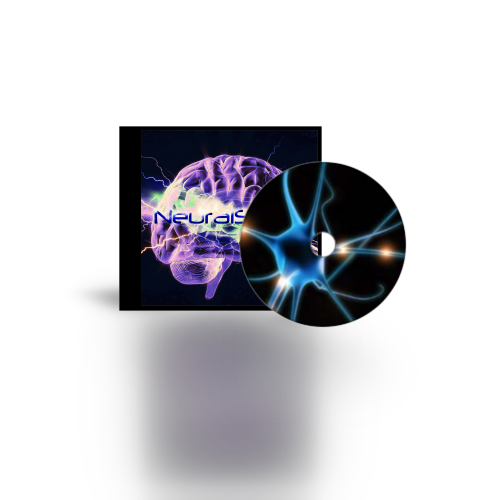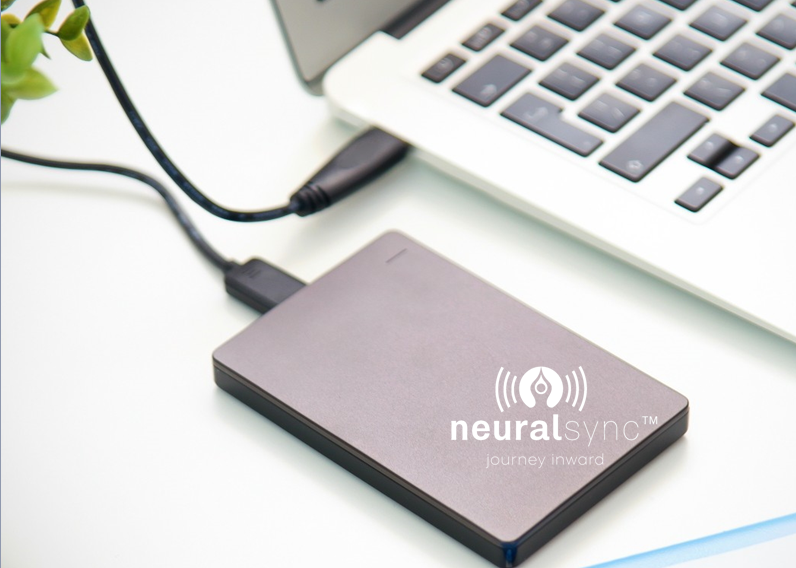NeuralSync’s technology is based on the vast number of studies proving the effectiveness of brainwave entrainment. If you are interested in a more thorough understanding of the brain, states of consciousness, or the science of sound, below is an abbreviated bibliography of scientific articles and books on these subjects and more related to brainwave entrainment.
Research in support of brainwave entrainment:
Aftanas, L., Golosheykin, S., (2001) “Human Anterior and Frontal Midline Theta and Lower Alpha Reflect Emotionally Positive State and Internalized Attention: High-resolution EEG Investigation of Meditation.” Neuroscience Letters. Vol. 310- 1, 7 57-60.
Aftanas, L., Golosheykin, S., (2005) Impact of regular meditation practice on EEG activity at rest and during evoked negative emotions. International Journal of Neuroscience.
Anand, B. K., China, G. S., & Singh, B., (1961). “Some Aspects of Electroencephalographic Studies in Yogis.” Electroencephalography and Clinical Neurophysiology, 13, 452-456.
Anch, A.M., Browman, C.P., Mitler, M.M. & Walsh, J.K., (1988). “Sleep: A Scientific Perspective.” (Englewood Cliffs: Prentice Hall).
Baehr, E., PhD, Rosenfeld, J. Peter, PhD, & Baehr, R., PhD, “Frontal Asymmetry Changes Reflect Brief Mood Shifts in Both Normal and Depressed Subjects.” Annual Conference, Society of Neuronal Regulation.
Bagchi, B. K., & Wenger, M. A., (1958). “Simultaneous EEG and Other Recordings During Some Yogic Practices.” Electroencephalography and Clinical Neurophysiology, 10, 193.
Baijal, S., Narayanan S., (2010) “Theta Activity and Meditative States: Spectral Changes During Concentrative Meditation.” Cognitive Processing. Vol.11-1, 31-38.
Banquet, J. P., (1972). “EEG and Meditation.” Electroencephalography and Clinical Neurophysiology, 33, 454.
Banquet, J. P., (1973). “Spectral Analysis of the EEG in Meditation.” Electroencephalography and Clinical Neurophysiology, 35, 143-151.
Barnhofer, T., Chittka, T., et al., (2009) “State Effects of Two Forms of Meditation on Prefrontal EEG Asymmetry in Previously Depressed Individuals”. Mindfulness. Vol. 1-1, 21-27.
Barnhofer, T., Duggan, D., Crane, C., et al., (2007) “Effects of Meditation on Frontal [Alpha]-Asymmetry in Previously Suicidal Individuals.” Neuroreport. Vol.18, Issue 7, 709-712.
Barr D.F., Mullin T.A., Herbert P.S., (1977). “Application of Binaural Beat Phenomenon with Aphasic Patients”. Arch Otolaryngol. 103 (4): 192-194.
Basar, E., (1980) “EEG Brain Dynamics.” Elsevier, Amsterdam.
Basar, E., (ed.) (1988) “Dynamics of Sensory and Cognitive Processing by the Brain.” Springer Verlag, Berlin, Germany.
Bear., (1977) “Efficacy of Alpha Biofeedback Training in Elevating Mood.” Journal of Consulting and Clinical Psychology, 45, 334.
Beatty, J., Greenberg, A., Deibler, W. P., O’ Hanlon, J. F., (1974). “Operant Control of Occipital Theta Rhythm Affects Performance in a Radar Monitoring Task.” Science 183:871-873.
Beck, A. T., (1987). Beck Depression Inventory Manual. New York: Harcourt, Brace, Jovanovich, Inc.
Beisteiner, R., Altenmuller, E., Lang, W., Lindinger, G., Deecke, L., (1994) “Measurement of Brain Potentials with EEG.” European Journal of Cognitive Psychology. 6:311-27.
Benson, H., Wallace, R.K., “Decreased Blood Pressure in Hypertensive Subjects Who Practiced Meditation.” Circulation Supplement II to Vols. 45 and 46.
Berg, K., Mueller, H., Siebael, D., Siever, D., (1999). “Outcome of Medical Methods, Audio-Visual Entrainment, and Nutritional Supplementation for the Treatment of Fibromyalgia Syndrome.” Presented at the Society for Neuronal Regulation.
Berg, K., Siever, D., (1999). “Audio-Visual Entrainment as a Treatment Modality for Seasonal Affective Disorder.” Presented at the Society for Neuronal Regulation.
Bermer, F., (1958). “Cerebral and Cerebellar Potentials.” Physiological Review, 38, 357-388.
Berry, S.D., Seager, M.A., (2001). “Hippocampal Theta Oscillations and Classical Conditioning”. Neurobiological Learning Memory 76 (3): 298-313. doi:10.1006/nlme.2001.4025.
Boersma, F., Gagnon, C., (1992). “The Use of Repetitive Audiovisual Entrainment in the Management of Chronic Pain.” Medical Hypnosis Journal, Vol 7, No 3: 80-97.
Bowen, S., Witkiewitz, K., et al., (2006). Mindfulness Meditation and Substance Use in an Incarcerated Population. Psychology of Addictive Behaviors. American Psychological Association 2006, Vol. 20, No. 3, 343—347.
Boynton, T., (2001). “Applied Research Using Alpha/Theta Training for Enhancing Creativity and Well-being.” Journal of Neurotherapy, 5(1-2), 5-18.
Brackopp, G. W., (1984). “Review of Research on Multi-Modal Sensory Stimulation with Clinical Implications and Research Proposals.” Unpublished manuscript–see Hutchison (1986).
Brady, B., (2000) “Binaural-beat Induced Theta EEG Activity and Hypnotic Susceptibility.” American Journal of Clinical Hypnosis.
Brefczynski-Lewis, J., Lutz, A., (2007) “Neural Correlates of Attentional Expertise in Long-term Meditation Practitioners.” Proceedings of the National Academy of the Sciences. vol. 104-27.
Brown, B. B., (1970). “Recognition of Aspects of Consciousness Through Association with EEG Alpha Activity Represented by a Light Signal.” Psychophysiology, 6, 442-452.
Budzynski, T. H., (1986). “Clinical Applications of Non-drug-induced States.” In B. B. Wolman & M. Ullman (Eds.), Handbook of States of Consciousness, pp. 428-460. (New York: Van Nostrand Reinhold Company).
Budzynski, T., Ph.D., “Brain Lateralization and Rescripting”.
Budzynski, T., Ph.D., Clinical Guide to Light and Sound
Budzynski, T., Ph.D., “The Case for Alpha-Theta: A Dynamic Hemispheric Asymmetry Model”.
Budzynski, T., Ph.D., (1977). “Tuning in on the Twilight Zone.” Psychology Today, August.
Budzynski, T., Ph.D., (1995) “Barebones 14 Hz EEG Training for Migraine.” Presented at the FUTUREHEALTH EEG conference.
Cade, C. M., Coxhead, N., (1979) The Awakened Mind: BiofeedBack and the Development of Higher States of Consciousness. New York: Delacorte Press.
Cahn, B.R., Polich J., (2006) “Meditation States and Traits: EEG, ERP, and Neuroimaging Studies.” Psychological Bulletin. Vol 132(2) 180-211.
Carter, G., (1993). Healing Myself. Norfolk: Hampton Roads Publishing Company.
Carter, Olivia L., Presti, D., et al. (2005) “Meditation Alters Perceptual Rivalry in Tibetan Buddhist Monks.” Current Biology, 15 (11).
Chatrian, G., Petersen, M., Lazarte, J., (1960). “Responses to Clicks from the Human Brain: Some Depth Electrographic Observation.” Electroencephalography and Clinical Neurophysiology, 12: 479-487.
Chiesa, A., Serretti, A., (2010) “A Systematic Review of Neurobiological and Clinical Features of Mindfulness Meditations.” Psychological Medicine. 40: 1239-1252.
Chuter, E., Allan, M., Laws, D., (2007) “A Pilot Study Comparing Reduction of Anxiety by Binaural Beat Audio and Patient-selected Music in the Pre-operative Period.” Anaesthesia. 62, 3 310.
Cott, A., Pavloski, R. P., & Goldman, J. A.
Coulson, Louis T. & Strickland, Alison, (1990). “Journeys Into Creative Problem Solving: Inviting Insights and Inventing Ideas Through Imagery.” Applied Creative Learning Systems Inc., Seminole, FL.
Davidson, R. J., Schwartz, G. E., & Shapiro, D., (1980). Consciousness and Self-regulation: Advances in Research. (Vol. 3). New York: Plenum Press.
Davidson, R., Kabat-Zinn J., et al., (2003) “Alterations in Brain and Immune Function Produced by Mindfulness Meditation.” Journal of Biobehavioral Medicine. 65:564-570.
Davidson, R., Lutz, A., (2008). “Buddha’s Brain: Neuroplasticity and Meditation.” [In the Spotlight]. Signal Processing Magazine. 25-1 176-174.
Deikman, A., (1969). “De-automatization and the Mystic Experience.” In C. T. Tart (Ed.), Altered States of Consciousness. New York: John Wiley & Sons.
Delmonte, M. M., (1984). “Electrocortical Activity and Related Phenomena Associated with Meditation Practice: A Literature Review.” International Journal of Neuroscience, 24, pp. 217-231.
Dempsey, E., Morison, R., (1942). “The Interaction of Certain Spontaneous and Induce Cortical Potentials.” American Journal of Physiology, 135: 301-307.
Dewhurst-Maddock, O., (1993). The Book of Sound Therapy. Fireside Publishers.
Donaldson, S., Ph.D. and Donaldson, M., M.ED., “QEEG, Psychological Status and EMG Activity in Fibromyalgia.” SNR 2002, International Society for Neuronal Regulation.
Egner, T., & Gruzelier, J. H., (2003, in press) “Ecological Validity of Neurofeedback: Modulation of Slow Wave EEG Enhances Musical Performance.” NeuroReport, 14(1).
Empson, J., (1986). Human Brainwaves: The Psychological Significance of the Electroencephalogram. London: The Macmillan Press Ltd.
Epel, E., et al., (2009). “Can Meditation Slow Rate of Cellular Aging? Cognitive Stress, Mindfulness, and Telomeres.” Annals of the New York Academy of Sciences. Volume 1172, 34-53.
Eppley, K.R., Abrams, A., (1989). “Differential Effects Of Relaxation Techniques on Trait Anxiety: A Meta-Analysis.” Journal of Clinical Psychology, Vol 45, 6: 957-973.
Etnier, J. L., Whitwer, S. S., Landers, D. M., Petruzzello, S. J., & Salazar, H. M., (1996) “Changes in Electroencephalographic Activity Associated with Learning a Novel Motor Task.” Research Quarterly for Exercise and Sport. 67(3), 272-287.
Evans, F. J., (1972). “Hypnosis and Sleep: Techniques for Exploring Cognitive Activity During Sleep.” In E. Fromm & R. E. Shor (Eds.), Hypnosis: Research developments and perspectives. Chicago: Aldine-Atherton.
Evans, R J., Gustafson, L. A., O’Connell, D. N., Orne, M. T. & Shor, R. E., “Verbally Induced Behavioral Response During Sleep.” Journal of Nervous and Mental Disease, 1, 1-26.
Farb, N., Segal., et al., (2007) “Attending to the Present: Mindfulness Meditation Reveals Distinct Neural Modes of Self-Reference.” Social Cognitive & Affective Neuroscience. Volume 2, Issue 4. 313-322.
Felipe, A., “Attitude Change During Interrupted Sleep.” Yale University Doctoral dissertation.
Fell, J., Axmacher, N., Haupt, S., (2010) “From Alpha to Gamma: Electrophysiological Correlates of Meditation-related States of Consciousness.” Medical Hypotheses. Vol.75, Issue 2, P.218-224.
Fischer, R., (1971). “A Cartography of Ecstatic and Meditative States.” Science, 174 (4012), pp. 897-904.
Foster, D. S., (1990) “EEG and Subjective Correlates of Alpha Frequency Binaural Beats Stimulation Combined with Alpha BiofeedBack.” Ann Arbor, MI: UMI, Order No. 9025506.
Foulkes, D. & Vogel, G., (1964). “Mental Activity at Sleep-onset.” Journal of Abnormal Psychology, 70, 231-243.
Fox, P., Raichle, M., (1985). “Stimulus Rate Determines Regional Blood Flow in Striate Cortex.” Annals of Neurology, Vol 17, No 3: 303-305.
Fredrick, J., Lubar, J., Rasey, H., Blackburn, J., (1999). “Effects of 18.5 Hz Audiovisual Stimulation On EEG Amplitude at the Vertex.” Proceedings AAPB Thirteenth Anniversary Annual Meeting, 42-45.
Gaynor, Md., M.L., (2002) The Healing Power of Sound. Shambhala Publications.
Gerken, G. M., Moushegian, G., Stillman, R. D., & Rupert, A. L.,(1975). “Human Frequency-following Responses to Monaural and Binaural Stimuli.” Electroencephalography and Clinical Neurophysiology, 38, 379-386.
Gevins, A., Smith, M. E., McEvoy, L., & Yu, D., (1997) “High-resolution EEG Mapping of Cortical Activation Related to Working Memory: Effects of Task Difficulty, Type of Processing, and Practice.” Cerebral Cortex. 7(4), 374-385.
Giannitrapani, D., (1985). The Electrophysiology of Intellectual Functions. New York: Karger.
Giannitrapani, D., (1969). “EEG Average Frequency and Intelligence.” Electroencephalography & Clinical Neurophysiology, 27, 480-486.
Gontgovsky, S., Montgomery, D., (1999). “The Physiological Response to “Beta Sweep” Entrainment.” Proceedings AAPB Thirteenth Anniversary Annual Meeting, 62-65.
Gottselig, J.M., Brandeis, D., Hofer-Tinguely, G., Borby, A.A., Achermann, P., (2004). “Human Central Auditory Plasticity Associated with Tone Sequence Learning”. Learning Memory. 11 (2): 162—71. doi:10.1101/lm.63304.
Green, E. E. & Green, A. M., (1986). “Biofeedback and States of Consciousness.” In B. B. Wolman & M. Ullman (Eds.), Handbook of States of Consciousness, pp. 553-589. New York: Van Nostrand Reinhold Company.
Green, E. E., Green, A. M., & Walters, E. D., (1970). “Voluntary Control of Internal States: Psychological and Physiological.” Journal of Transpersonal Psychology, 2, 1-25.
Griffin, A.L,, Asaka, Y., Darling, R.D., Berry, S.D., (2004). “Theta-contingent Trial Presentation Accelerates Learning Rate and Enhances Hippocampal Plasticity During Trace Eyeblink Conditioning”. Behavioral Neuroscience. 118 (2): 403-11. doi:10.1037/0735-7044.118.2.403.
Guilfoyle, G. & Carbone, D., (1996). “The Facilitation of Attention Utilizing Therapeutic Sounds.” Presented at the New York State Association of Day Service Providers Symposium, October 18, 1996, Albany, New York.
Gurnee, R., “Major Depressive Disorder: QEEG Subtypes and Treatment Implications.” Annual Conference, Society of Neuronal Regulation.
Hammond, D. Corydon, Ph.D., “EEG Patterns Associated with High Hypnotizability: Practical Clinical Implications”.
Hammond, D. Corydon, Ph.D., “Roshi Compared with the Rosenfeld Depression Protocol: A Case Report.” Annual Conference, Society of Neuronal Regulation.
Hammond, D. Corydon, Ph.D., (1999). “Treatment of Chronic Fatigue Syndrome with Neurofeedback and Self-hypnosis: A Case Report.” Journal of Neurotherapy, 3 (3 & 4) 63-64.
Hardt, J. V., & Kamiya, J., (1978). “Anxiety Change Through Electroencephalographic Alpha Feedback Seen Only in High Anxiety Subjects.” Science, 201, 79-81.
Hawes, T., M.ED., ED.S., Using Light And Sound Technology To Access “The Zone” In Sports And Beyond.
Henry, J.P., (1992). Instincts, Archetypes and Symbols: An Approach to the Physiology of Religious Experience. Dayton: College Press.
Hermens, D. F., Soei, E. X., Clarke, S. D., Kohn, M. R., Gordon, E., Williams, L. M., (2005). “Resting EEG Theta Activity Predicts Cognitive Performance in Attention-deficit Hyperactivity Disorder.”
Hink, R. F., Kodera, K., Yamada, O., Kaga, K., & Suzuki, J., (1980). “Binaural Interaction of a Beating Frequency Following Response.” Audiology, 19, pp. 36-43.
Hirai, T., (1960) “Electroencephalograpic Study of Zen Meditation.” Psychiatry. Neurology. 62, 76-105.
Hoovey, Z. B., Heinemann, U. & Creutzfeldt, O. D., (1972). “Inter-hemispheric ‘Synchrony’ of Alpha Waves.” Electroencephalography and Clinical Neurophysiology, 32, 337-347.
Howard, C. E., Graham, L. E., 2nd and Wycoff, S. J., (1986). “A Comparison of Methods for Reducing Stress Among Dental Students.” J Dent Education. 50, 542-544.
Hunt, V. V., (1995). Infinite Mind: The Science of Human Vibrations. Malibu: Malibu Publishing Company.
Hurley, J.D., & Meminger, S. R., (1992). “A Relapse-prevention Program: Effects of Electromyographic Training on High and Low Levels of State and Trait Anxiety.” Perceptual and Motor Skills. 74, 699705.
Hutchison, Michael M., (1986). Megabrain: New Tools and Techniques for Brain Growth and Mind Expansion. New York: W. Morrow. ISBN 0-688-04880-3.
Ibric, Victoria L. , MD, PhD., “Neurofeedback in Major Depression Associated to Addictions – A Case Study.” Journal Of NeuroTherapy.
Jackson, G. M., & Eberly, D. A., (1982) “Facilitation of Performance on an Arithmetic Task as a Result of the Application of a Biofeedback Procedure to Suppress Alpha Wave Activity.” Biofeedback and Self-Regulation. 7, 211-221.
Jain, S., Shapiro, S.L., et al., (2007) “A Randomized Controlled Trial of Mindfulness Meditation Versus Relaxation Training: Effects on Distress, Positive States of Mind, Rumination, and Distraction.” Annals of Behavioral Medicine Volume 33, Number 1, 11-21.
James H. Satterfield, M.D., Dennis P. Cantwell, M.D., Ronald E. Saul, M.D., Alvin Yusin, M.D., (1974). “Intelligence, Academic Achievement, and EEG Abnormalities in Hyperactive Children.” American Journal of Psychiatry. 131:4.
Jausovec, N., (1996). “Differences in EEG Alpha Activity Related to Giftedness.” Intelligence, 23, 159-173.
Jevning, R., Wallace, R. K., & Beidenbach, M., (1992). “The Physiology of Meditation: A Review. A Wakeful Hypnometabolic Integrated Response.” Neuroscience and Behavioral Reviews, 16, pp. 415-424.
Jovanov, E., Rakovi, D., Car, M., (1995) “Evaluation of State of Consciousness Using Software Support for Monitoring Spatio-temporal EEG Changes.” ISCA International. Conference on Computer Applications in Engineering and Medicine.
Kamiya, J., (1969) “Operant Control of the EEG Alpha Rhythm and Some of its Reported Effects on Consciousness.” In Tart (Ed.), Altered States of Consciousness (pp. 519-529).
Karino, S., Yumoto, M., et al., (2006) “Neuromagnetic Responses to Binaural Beat in Human Cerebral Cortex.” Journal of Neurophysiology. 96. 1927-38.
Kasamatsu, A., & Hirai, T., (1969) “An Electroencephalographic Study on the Zen Meditation.” In Tart (Ed.), Altered States of Consciousness (pp. 501-514).
Kennerly, R. C., (1994). “An Empirical Investigation into the Effect of Beta Frequency Binaural Beat Audio Signals on Four Measures of Human Memory.” Department of Psychology, West Georgia College, Carrolton, Georgia.
Kennerly, R., (2004) “QEEG Analysis of Binaural Beat Audio Entrainment: A Pilot Study.” Journal of Neurotherapy.
Klepp, S., (2005) “Effects of Binaural-beat Stimulation on Recovery Following Traumatic Brain Injury: A Pilot Study.” Subtle Energies and Energy Medicine.
Klinger, E., Gregoire, K. C., Barta, S. G., (1973) “Physiological Correlates of Mental Activity: Eye Movements, Alpha, and Heart Rate During Imaging, Suppression, Concentration, Search, and Choice.” Psychophysiology, 10, 471-477.
Kooi, K. A., (1971). Fundamentals of Electroencephalography. New York: Harper & Row.
Kosycki, D., Benger, M., et al., (2007). “Randomized Trial of a Meditation-based Stress Reduction Program and Cognitive Behavior Therapy in Generalized Social Anxiety Disorder.” Behaviour Research and Therapy. Vol. 45-10, 2518-2526.
Lagopoulos, J., Xu, J., Rasmussen, I., et al., (2009) “Increased Theta and Alpha EEG Activity During Nondirective Meditation.” The Journal of Alternative and Complementary Medicine. 15(11): 1187-1192.
Lane, J. D., Kasian, S. J., Owens, J. E. and Marsh, G. R., (1998). “Binaural Auditory Beats Affect Vigilance, Performance and Mood.” Physiology Behaviour. 63, 249-252.
Lawson, R., and Rogers, R., “Relationship Between Depression Severity and Overall EEG Abnormality.” Annual Conference, Society of Neuronal Regulation.
Lawson, R., M.S., and Bodenhamer-Davis, E., “Anterior Alpha Asymmetry in Anxiety and Depression.” Annual Conference, Society of Neuronal Regulation.
Lawson, R., M.S., Barnes, T., M.A., “EEG Asymmetry and Depression Severity: A Comparison of Various Asymmetry Measures.” QEEGT. University of North Texas, Neurotherapy Lab, Annual Conference, Society of Neuronal Regulation.
Lazar, S., Kerr, C., Wasserman, R., Gray, J., (2005) “Meditation Experience is Associated with Increased Cortical Thickness.” Neuroreport. 16(17): 1893—1897.
Lehmann, D., Faber, P.L., Achermann, P., et al., (2001) “Brain Sources of EEG Gamma Frequency During Volitionally Meditation-induced, Altered States of Consciousness, and Experience of the Self.” Psychiatry Research & Neuroimaging. Vol.108-2, 111-121.
Lo, P., Leu, J., “Quantification of Pseudo-periodicity of Alpha Rhythm in Meditation EEG.” Journal of Medical and Biological Engineering, Vol 25, No 1.
Lubar, J. F., Swartwood, M. O., Swartwood, J. N., & O’Donnell, P. F.L., (1995). “Evaluation of the Effectiveness of EEG Neurofeedback Training for ADHD in a Clinical Setting as Measured by Changes in T.0.V.A. Scores, Behavioral Ratings, and WISC-R Performance.” Biofeedback and Self-Regulation, 20, 83-99.
Lubar, J. F., (1991). “Discourse on the Development of EEG Diagnostics and Biofeedback for Attention-Deficit/Hyperactivity Disorder.” Biofeedback and Self-Regulation, 16, 201-225.
Lubar, J. O., and Lubar, J. F., (1984). “Electroencephalographic Biofeedback of SMR and Beta for Treatment of Attention Deficit Disorders in a Clinical Setting.” Biofeedback and Self Regulation 9, no. 1, 1-23.
Lubar, J.F., Shabsin, H.S., Natelson, S.E., Holder, G.S., Whitsett, S.F., Pamplin, W.E., and Krulikowski, D.I., (1981). “EEG and Behavioral Changes in a Hyperactive Child Concurrent Training of the Sensorimotor Rhythm (SMR). A Preliminary Report.” Biofeedback and Self-Regulation, 1, 293-306.
Luria, A. R., (1970). The Functional Organization of the Brain. Recent Progress in Perception. San Francisco: W. H. Freeman and Company.
Mann, C. A., Lubar, J. E, Zimmerman, A. W., Miller, C. A., & Muenchen, R. A., (1992). “Quantitative Analysis of EEG in Boys with Attention-Deficit-Hyperactivity Disorder: Controlled Study with Clinical Implications.” Pediatric Neurology, 8,30-36.
Manns, A., Mirralles, R., Adrian, H., (1981). “The Application of Audio Stimulation and Electromyographic Biofeedback to Bruxism and Myofascial Pain-Dysfunction Syndrome.” Oral Surgery, Vol 52, No 3, 247-252.
Margolis, B., (1966) “A Technique For Rapidly Inducing Hypnosis”.
Markland, O.N., (1990). “Alpha Rythms.” Journal of Clinical Neurophysiology, 7, 163-189.
Martindale, C., Hasenfus, N., (1978) “EEG Differences as a Function of Creativity, Stage of the Creative Process, and Effort to be Original.” Biological Psychology. 6, 157-167.
Martindale, C., (1978) “Creativity, Consciousness, and Cortical Arousal.” Journal of Altered States of Consciousness, 3, 69-87.
Martindale, C., Armstrong, J., (1974) “The Relationship of Creativity to Cortical Activation and its Operant Control.” Journal of Genetic Psychology, 124, 311-320.
Martindale, C., Mines, D., (1975) “Creativity and Cortical Activation During Creative, Intellectual and EEG Feedback Tasks.” Biological Psychology. 3, 91-100.
Martindale, C., Mines, D., Mitchell, L., Covello, E., (1984) “EEG Alpha Asymmetry and Creativity. Personality & Individual Differences.” 5(1), 77-86.
Matarazzo, J. D., (1972). Wechsler’s Measurement and Appraisal of Adult Intelligence. 5th ed. Baltimore: Williams & Wilkins.
McMoneagle, J., (1993). Mind Trek. Norfolk: Hampton Roads Publishing Company.
Mikuriya, T. H., (1979). “Interhemispheric Alpha Rhythm Synchronization: A Voluntary Altered State of Consciousness.” American Journal of Clinical Biofeedback, 2, 22-25.
Molle, M., Marshall, L., Wolf, B., Horst, L., & Born, J., (1999). “EEG Complexity and Performance Measures of Creative Thinking.” Psychophysiology. 36.
Monroe, R. A., (1985). Far Journeys. New York: Doubleday.
Moore, A., Malinowski, P., (2009) “Meditation, Mindfulness and Cognitive Flexibility”. Consciousness and Cognition, 18 (1), pp. 176-186.
Morris, S., (1991). “Facilitation of Learning. Neurodevelopmental Strategies for Managing Communication Disorders in Children with Severe Motor Dysfunction.” Austin, Tex.: Pro-ed.
Moushegian, G., Rupert, A.L., Stillman, R.D., (1978). “Evaluation of Frequency-following Potentials in Man: Masking and Clinical Studies”. Electroencephalography and clinical neurophysiology 45 (6).
Ogilvie, R.D., Hunt, H.T., Tyson, P.D., Lucescu, M.L., Jeakins, D.B., (1982). “Lucid Dreaming and Alpha Activity: A Preliminary Report”. Perceptual and motor skills 55 (3 Pt 1).
Ossebaard, H. C., (2000). “Stress Reduction by Technology? An Experimental Study into the Effects of Brainmachines on Burnout and State Anxiety.” Applied Psychophysiology Biofeedback. 25, 93-101.
Oster, G., (1973). “Auditory Beats in the Brain.” Scientific American, 229, 94-102.
Othmer, S., Othmer, S.F., (1989). “EEG Training for ADHD and Learning Disorders.”
Pace, T., Negi L., (2009). “Effect of Compassion Meditation on Neuroendocrine, Innate Immune and Behavioral Responses to Psychosocial Stress.” Psychoneuroendocrinology Volume 34-1. 87-98.
Pagnoni, G., Cekic, M., (2007). “Age Effects on Gray Matter Volume and Attentional Performance in Zen Meditation.” Neurobiology of Aging. 28-10 1623-1627.
Penfield, W., (1975). The Mystery of the Mind. Princeton: Princeton University Press.
Peniston, E. G., and Kulkosky, P. J., (1989). “Alpha-theta Brainwave Training and Beta-endorphin Levels in Alcoholics.” Alcoholism: Clinical and Experimental Research. 13:271-79.
Petsche, H., Kaplan, S., von Stein, A., and Filz, O., (1997). “The Possible Meaning of the Upper and Lower Alpha Frequency Ranges for Cognitive and Creative Tasks.” International Journal of Psychophysiology. 26, 77-97.
Reddi, V., (2002) “Effect of Binaural Beat Stimulation on Pain and Mood in Individuals Reporting Chronic Low Back Pain.” Moore Health Science Library, University of Virginia.
Rosenzweig, M. R., “Auditory Localization.” Perception: Mechanisms and Models, Readings from Scientific American, W. H. Freeman and Company, San Fransisco.
Rossi, E. L., (1986) “Altered States of Consciousness in Everyday Life: The Ultradian Rhythms.” In B. B. Wolman & M. Ullman (Eds.), Handbook of States of Consciousness, pp. 97-133. New York: Van Nostrand Reinhold Company.
Sabourin, M. E., Cutcomb, S. E., Crawford, H. J., & Pribram, K., (1990). “EEG Correlates of Hypnotic Susceptibility and Hypnotic Trance: Spectral Analysis and Coherence.” International Journal of Psychophysiology, 10, pp. 125-142.
Schacter, D. L., (1977). “EEG Theta Waves and Psychological Phenomena: A Review and Analysis.” Psychology, 5, 47-82.
Schwartz, G. E., & Shapiro, D. (Eds.), (1976). Consciousness and Self-regulation: Advances in Research. (Vol. 1). New York: Plenum Press.
Shannahoff-Khalsa, D., (1991). “Lateralized Rhythms of the Central and Autonomic Nervous Systems.” International Journal of Psychophysiology, 11, pp. 225-251.
Siever, D., Twittey, M., “Light and Sound Stimulation as a Treatment for Chronic Pain.” Unpublished.
Siever, D., “Isochronic Tones and Brainwave Entrainment.” Unpublished.
Singer, W., (1993). “Synchronization of Cortical Activity and its Putative Role in Information Processing and Learning.” Annual Review Physiology, 55, 349-374.
Smith, J. C., Marsh, J. T., Brown, W. S., (1975). “Far-field Recorded Frequency-following Responses: Evidence for the Locus of Brainstem Sources”. Electroencephalography and clinical neurophysiology 39 (5): 465-72.
Spitzer, M. W., Semple, M. N., (1998). “Transformation of Binaural Response Properties in the Ascending Auditory Pathway: Influence of Time-varying Interaural Phase Disparity”. Journal of Neurophysiology. 80 (6): 306-76. PMID 9862906.
Spoormaker, V. I., Van den Bout, J., (2006). “Lucid Dreaming Treatment for Nightmares: A Pilot Study”. Psychotherapy and Psychosomatics 75 (6): 389—94. doi:10.1159/000095446.
Takahashi, T., Murata, T., et al., (2005). “Changes in EEG and Autonomic Nervous Activity During Meditation and their Association with Personality Traits.” International Journal of Psychophysiology. Vol.55-2, 199-207.
Tang, Y., Yinghua, M., et al., (2009). “Central and Autonomic Nervous System Interaction is Altered by Short-term Meditation.” PNAS. 106-22 8865-8870.
Tart, C. T., (1969). States of Consciousness. New York: E. P. Dutton & Company.
Tavee and Stone, (2010). “Healing the Mind: Meditation and Multiple Sclerosis.” Neurology. 75: 1130-1131.
Taylor, P., (2005). “Human Auditory Steady State Responses to Binaural and Monaural Beats”. Clinical neurophysiology : Official Journal of the International Federation of Clinical Neurophysiology 116 (3): 658—68.
Thaut, M. H., (2003). “Neural Basis of Rhythmic Timing Networks in the Human Brain”. N. Y. Academy of Science. 999: 364-73. doi:10.1196/annals.1284.044.
Thomas, Joseph E., Ph.D. and Sattlberger, Elizabeth, B.A., “Treatment of Chronic Anxiety Disorder with Neurotherapy: A Case Study.”
Thomas, N., Siever, D., (1976). “The Effect of Repetitive Audio/Visual Stimulation on Skeletomotor and Vascular Activity.” Hypnosis – The Fourth European Congress at Oxford.
Vernon, D., Egner, T., Cooper, N., (2003).”The Effect of Training Distinct Neurofeedback Protocols on Aspects of Cognitive Performance”. International Journal of Psychophysiology. 47 (1): 75-85.
Waldkoetter, R. O., (1983). “The Use of Audio-guided Stress Reduction to Enhance Performance.” Paper presented at the 25th Annual Conference of the Military Testing Association, Gulf Shores AL.
Wallace, R. K., Benson, H., (1972) “The Physiology of Meditation.” Scientific American. 226:84.
Walter, V. J. & Walter, W. G., (1949). “The Central Effects of Rhythmic Sensory Stimulation.” Electroencephalography and Clinical Neurophysiology, 1, 57-86.
Walton, K.G., Pugh, N., (1995) “Stress Reduction and Preventing Hypertension: Preliminary Support for Psychoneuroendocrine Mechanism.” The Journal of Alternative and Complimentary Medicine, Vol 1.
Watson, C. G., Herder, J., Passini, F.T., (1978). “Alpha Biofeedback Therapy in Alcoholics: An 18-month Follow-up”. Journal of clinical psychology 34 (3): 765ï—9. doi:10.1002/1097-4679(197807)34:33.0.CO;2-5.
Wenk S., (2005). “Meditation Can Reduce Habitual Responding.” Alternative Therapy Health Medicine. 11(2): 42-58.
West, M. A., (1980). “Meditation and the EEG.” Psychological Medicine, 10, pp. 369-375.
Wong, M.R., Brochin, N.E., & Genfron, K.L., (1981). “Effects of Meditation on Anxiety and Chemical Dependency.” Journal of Drug Education, 11, 91-105.
Yamada, O., Yamane, H., Kodera, K., (1977). “Simultaneous Recordings of the Brain Stem Response and the Frequency-following Response to Low-frequency Tone”. Electroencephalography and clinical neurophysiology 43 (3): 362-70.
Zametkin, A. I., Liebenauer, L. L., King, A. C., Minunkas, D. V., Herscovitch, P., Yamada, E. M., & Cohen, R. M., (1993). “Brain Metabolism in Teenagers with Attention-Deficit Hyperactivity Disorder.” Archives of General Psychiatry, 50, 333-340.
Zautra, A., Davis, M., et al., (2008) “Comparison of Cognitive Behavioral and Mindfulness Meditation Interventions on Adaptation to Rheumatoid Arthritis for Patients With and Without History of Recurrent Depression.” Journal of Consulting and Clinical Psychology Volume 76, Issue 3, June 2008, Pages 408-421.
Zhang, J.Z, Zhao, J., He, Q.N., (1988) “EEG Findings During Special Psychical State (Qi Gong State) by Means of Compressed Spectral Array and Topographic Mapping.” Computers in Biology and Medicine. Vol. 18, 6:455-463.
Zigler, E. F., and Finn-Stevenson, M., (1987). Children: Development and Social Issues. Lexington, Mass.: D.C. Heath and Company.
Zylowska, L., Ackerman D., (2007). “Mindfulness Meditation Training in Adults and Adolescents With ADHD: A Feasibility Study.” Journal of Attention Disorders.

